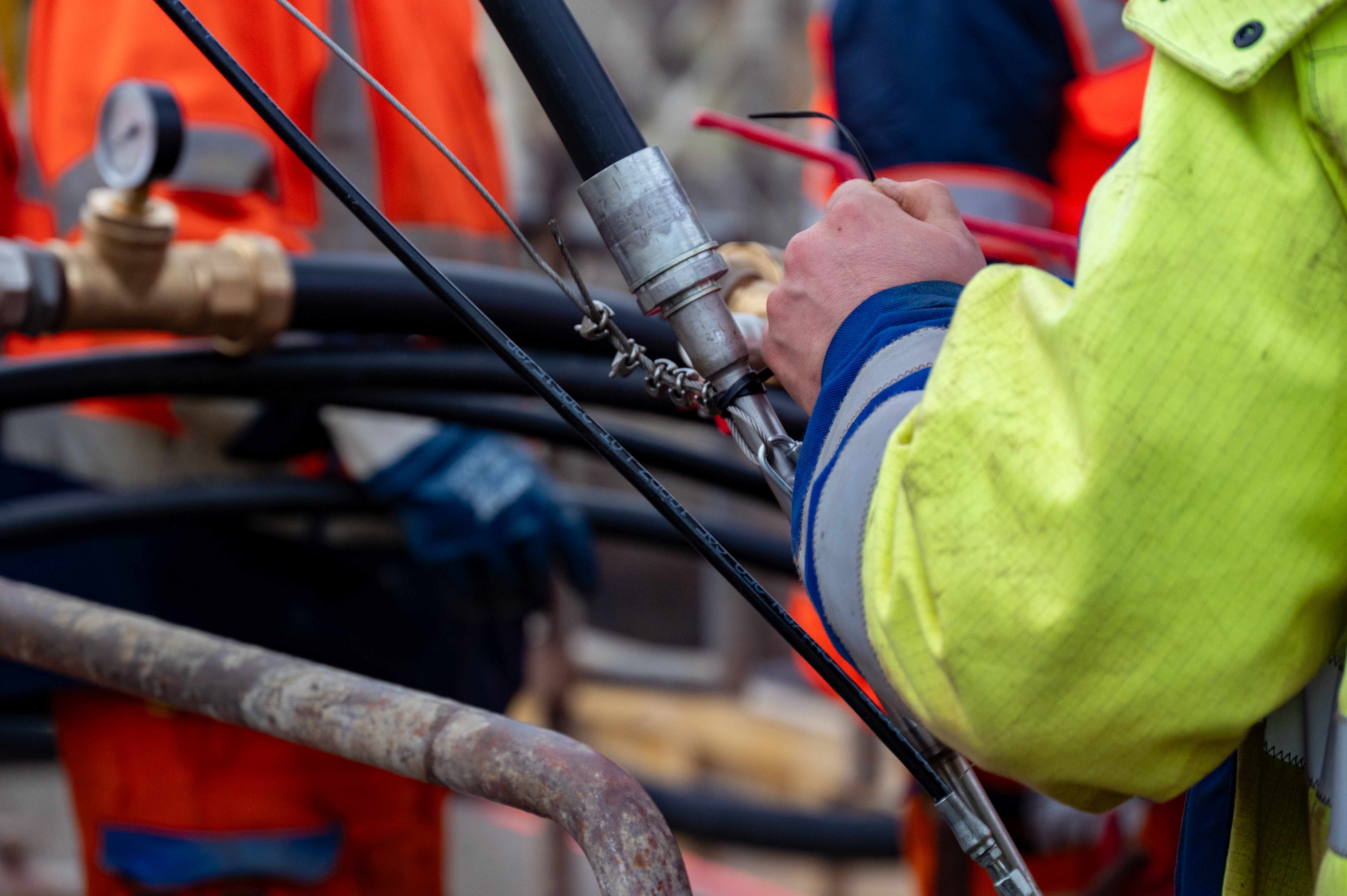As part of the GFK-Monitor project (Fiber Optic Cable Monitoring/in German: GlasFaserKabel-Monitoring), a comprehensive monitoring system is being developed using fiber optic technology and tracer technology to improve the integrity of geothermal systems. The overarching goal of the project is to enhance the production and operational safety of geothermal plants and their efficiency while minimizing or avoiding potential environmental impacts.
To achieve this, a comprehensive system integrity management concept for geothermal operations is being developed, utilizing operational data, advancing innovative monitoring techniques of fiber optic cable (GFK) technology, and integrating them into existing data infrastructures where possible. Concepts for integrating innovative operational information for monitoring and operational optimization will also be developed.
The system integrity management aims to significantly support operators of geothermal plants in mitigating technical and financial risks. This enables sustainable and careful management of the reservoir to ensure an economically and ecologically efficient use of deep geothermal energy. The developed monitoring tools and integrative methods, which are being established in the well-known reservoir of the Bavarian Molasse, will also be applicable to other locations.
The scientific support from Fraunhofer IEG focuses on two central aspects: monitoring borehole integrity and monitoring the submersible pump using fiber optic technology. The monitoring relies on fiber optic cable (GFK) technology. The unique advantage of GFK measurements is that they provide highly resolved and continuous data on temperature (DTS), strain (DSS), and acoustics (DAS). Additionally, existing fiber optic cable infrastructure, such as telecommunications lines, can be synergistically utilized for geothermal questions, allowing important data to be collected over a larger area, as temperature, pressure, and vibration leave characteristic signals in the light of the cable. The professional analysis of thermal and mechanical data enables assessment of both the quality of cementing in the borehole after drilling and the wear of the pump during actual heating operations.

